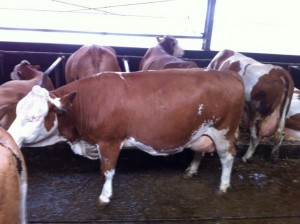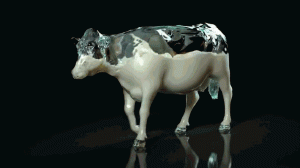Stray Voltage Problems in Dairy Cattle
Stray Voltage and Milking performance in Dairy farms
Stray voltage problems (also called “ground current”) in dairy cattle with currents upwards of 3.6 mA have been shown to cause cow discomfort and poor milking performance. Dairy cows act nervous and do not consume all their feed and don`t drink the normal amount of water needed to produce milk at the level they can in a given Dairy barn facility. Lower milk production, increases in incidence of mastitis/somatic cell counts and reproductive problems can arise. Preventing Stray voltage is an approach that makes way more sense.
What is the mechanism of Stray voltage?
When milking cows make contact with metallic structures of the barn or facility they are in, a current flows through their bodies as a result of them offering an electrical resistance. They can conduct the electricity but have an inherent resistance. The level of this current is determined by how well the system of housing they are in is grounded. Depending on the current that flows through the cow, there is nervous stimulation. This current becomes relevant when certain Volts are reached and this – paired with the resistance of the animal – will cause problems mentioned above.


When dairy cows are exposed to stray voltage, the reaction that results begins with Sensory nervous stimulation that goes largely unnoticed and progresses to involuntary contraction of muscles in an obvious aversive manner. The subtle blinking of the eyes, tail swishing or limb lifting and other changes in behavior may occur – such as avoiding the feeding area or water intake. So the path to feed and water must be examined very closely for the presence of Stray voltage. Stray voltage testing is necessary to find out the exact effects. The exposure has to be long and strong enough for the milking cow to search out a different path from what she is used to. Her behavior change can then be traced to an issue with stray voltage. Popular breeds of dairy cattle under modern production systems can be subject to problems related to stray voltage.
There are numerous resources that can be found. Principally, a few key points need to be kept in mind when you are on the hunt for Stray voltage:
Are any of the below factors causing a drop in milk and cheese production?
- Poor nutrition
- High temperatures
- Infectious diseases
- Milking machine defects
- Improper handling of cows
Are you seeing a reduced water intake and WHY?
Water intake is primarily determined by four factors:
- dry matter intake
- milk production
- air temperature
- sodium intake.
Exceptions occur when cows are not able to swallow water because of some physical disability or when the cow cannot reach a water source. Over a period of several days, a cow must consume enough water either through drinking or in forages to maintain a balance in body constituents. A change in water intake can occur whenever one or more of the four major determinants of water needs are altered.
Here is a great resource: www.wisconsinpublicservice.com/business/pdf/farm_voltage.pdf ·